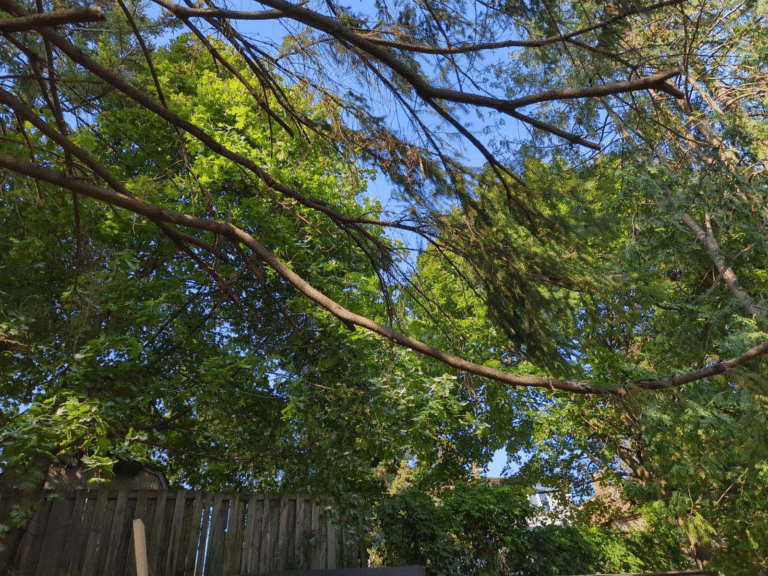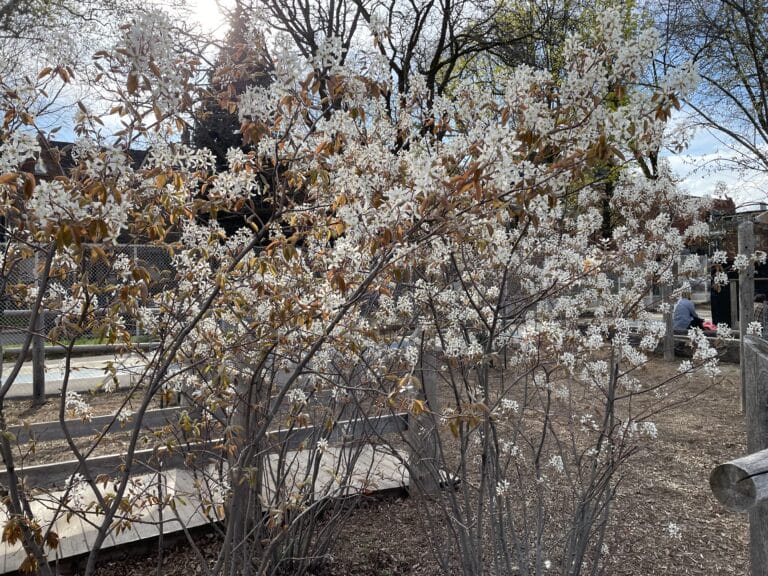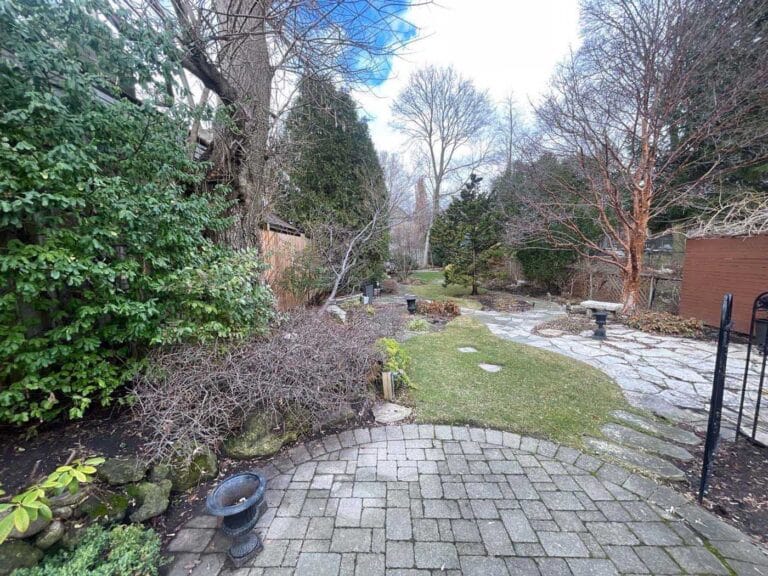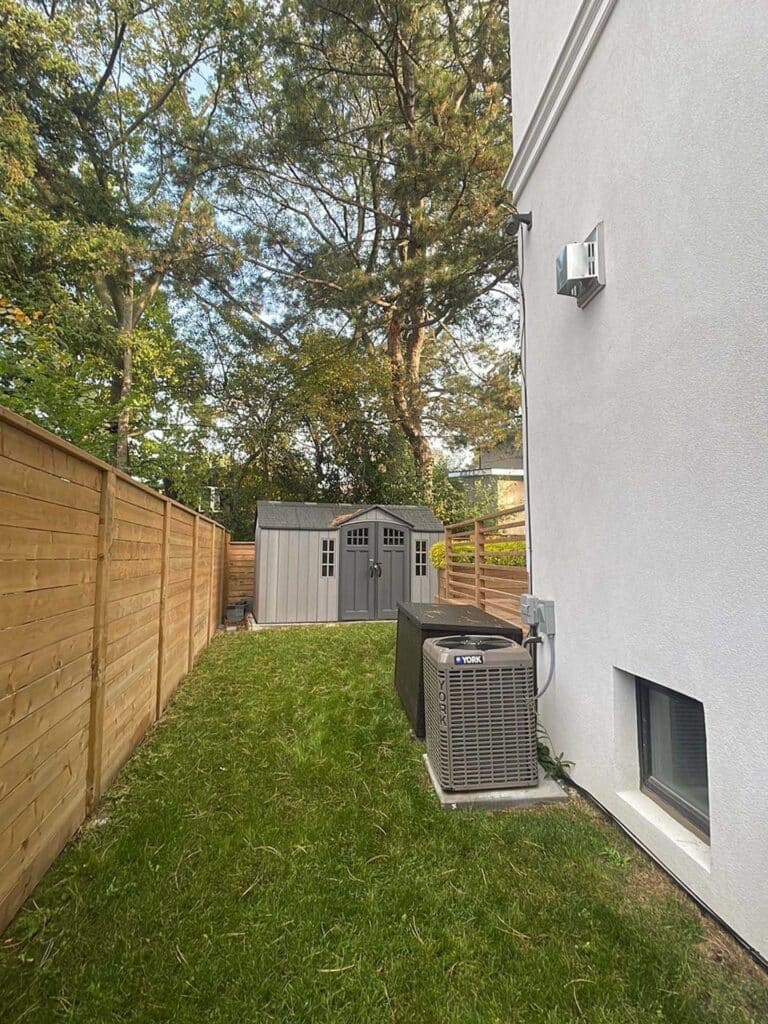We’ve all seen those trees in the neighbourhood that look like they’ve had a bad haircut — chopped off at the top with spindly branches shooting out in odd directions. It’s not just an ugly look. Tree topping can cause severe long-term damage. On the other hand, tree trimming — the careful, selective pruning of branches — keeps trees healthy, strong, and beautiful.
In this blog post, we’ll break down tree trimming vs. topping, why topping hurts trees like oaks, silver maples, Norway maples, and evergreens, and why trimming is always the better option for Toronto homeowners who care about the health and appearance of their trees.
What’s the Difference between topping trees and trimming them?
Tree trimming (also known as tree pruning) is the removal of selected branches to improve the tree’s health and shape. It encourages strong growth, prevents disease, and enhances the tree’s natural form.
Tree topping, on the other hand, is the drastic cutting of the tree’s top branches, usually done to reduce height. This effort to control growth leaves the tree looking like a stubby pole with weak, unruly branches. Not only does it look bad, but it also compromises the tree’s health and structural integrity.
Here’s a quick comparison of the two approaches:
| Tree Trimming | Tree Topping |
| Promotes balanced, healthy growth | Promotes weak, unstable growth |
| Maintains the tree’s natural shape | Leaves the tree misshapen and unnatural |
| Strengthens the tree’s structure | Weakens the tree, increasing the risk of breakage |
| Prevents disease and decay | Creates large wounds that invite disease |
| Enhances long-term tree health | Shortens the tree’s lifespan |
| Legal and follows Toronto bylaws | Could get you fined for damaging the tree |
Facts about Tree Biology and Tree Topping

Before you start trimming and topping your trees, you must learn what to do and what not to do. Some individuals think tree care is an easy practice, but in reality, trees are very complex and require careful planning for successful maintenance.
A homeowner had a handyman cut this tree, unfortunately it was severely wounded. Owner was issued a city order to comply and have the tree pruned properly, as well as install mulch and pay a fine. Hiring amateurs often means you pay twice!
The Role of the Leader Stem and Apical Dominance
At the center of every healthy tree is its leader stem — the main vertical branch guiding upward growth. This leader stem produces hormones that control and suppress the growth of side branches, ensuring balanced, sturdy growth. This phenomenon is called apical dominance.
When you remove the leader stem by topping, the tree loses this natural growth control. The result? A tree that sends out weak, fast-growing shoots called water sprouts, which don’t attach properly to the trunk. These branches are more likely to snap off in strong winds (a common occurrence in Toronto), creating safety hazards and tree damage.
Why Topping is Harmful to Oaks, Silver Maples, and Norway Maples
Topping is particularly harmful to species we often see in Toronto, as they rely on a strong central leader stem for stability. These vulnerable species include:
Oaks:
Slow-growing and majestic, oaks rely on a strong central leader for long-term stability. Topping disrupts this process, forcing the tree to divert its energy into weak water sprouts. These new branches are fragile and more likely to break, making the tree hazardous and less structurally sound.
Silver Maples:
Known for their fast growth, silver maples can quickly become overgrown. Topping might seem like a solution, but it only creates more problems by encouraging the growth of weak shoots. These shoots are prone to breakage, especially in storms, increasing the risk of property damage.
Norway Maples:
When a Norway maple is topped, it often develops dense clusters of water sprouts that make the tree look cluttered and unnatural. Norway Maple trees are also more prone to decay and disease after topping, further shortening their lifespan.
The Unique Impact of Topping Evergreens
Evergreens, like cedar hedges and cedar trees, face an entirely different problem when topped — they simply don’t recover. Unlike deciduous trees, which can sprout new growth from old wood, evergreens depend on the tips of their branches for new growth. When you cut off the tops of these trees or hedges, they can’t regenerate in the same way.
Imagine a thick, lush cedar hedge that a homeowner wants to make shorter. Proper hedge pruning could reduce the height over time, but they want a fast result – so they hire someone to cut it in half. It is definitely shorter, but the tops of the stems die back and create big patches and holes. After topping, the rest of the hedge will become thin and scraggly.
Topping can be hard or impossible to repair
What’s left is an unsightly, sparse hedge that won’t bounce back, no matter how much you try to coax new growth. In essence, topping evergreens leaves you with visually and structurally permanent damage. This type of hedge damage can be very hard to repair.
The Best Practices for Tree Care in Toronto
Everyone with trees on their property should be informed on proper tree care practices. Make sure you get it right with these top tips:
- Hire a Certified Arborist: Proper trimming should always be done by a professional who understands the unique biology of each tree species. A certified arborist will know how to prune trees to keep them healthy and beautiful without resorting to harmful topping practices.
- Trim Regularly: Trimming is most effective when done regularly. Every few years (depending on the tree species and growth rate), have your trees pruned to keep them healthy and prevent overgrowth.
- Avoid Topping: Topping might seem like a quick fix, but it leaves long-term damage. This is especially true for oaks, silver maples, Norway maples, and evergreens. Focus on trimming as a way to control size and promote health.
Let Vista Tree Management Help You Care for Your Trees
At Vista Tree Management, we care as much about the health of your trees as you do. We understand that each tree has unique needs, and our certified arborists use trimming techniques that promote healthy growth without causing the harm that topping does.
The team of experienced arborists here at Vista Tree Management care as much about the health of your trees as you do. Each tree and customer has unique needs, which is why our trimming techniques are adaptive and extremely effective regardless of the tree size.
Opting for trimming instead of topping allows Toronto homeowners to protect their trees from unnecessary damage. Keep your beloved trees around for years to come with the help of Vista Tree Management; contact us today to schedule a consultation.




